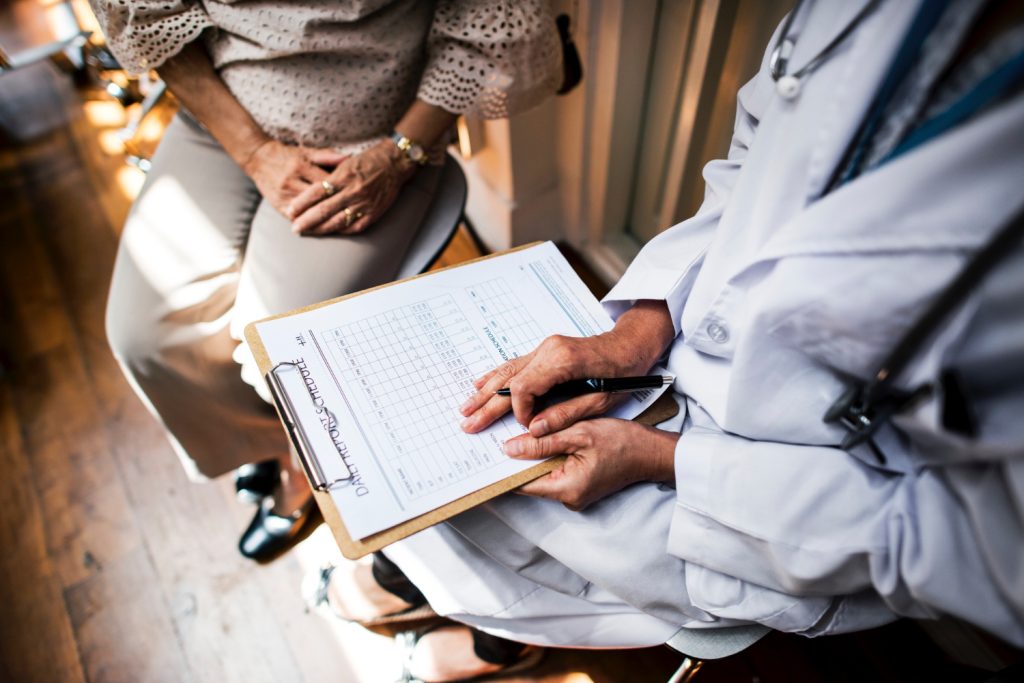Blueprints for Tomorrow: Healthcare Planning

Tomorrow’s care is drafted long before it is delivered. Healthcare planning is the quiet architecture behind hospitals that withstand surges, clinics that meet community needs, and digital systems that connect insight to action. In an era shaped by aging populations, chronic disease, rapid technology cycles, climate shocks, and constrained budgets, the blueprint cannot be a static drawing. It is a living plan, revised at the pace of new evidence, shifting demographics, and lessons from crisis. Blueprints for Tomorrow: Healthcare Planning explores how systems, policymakers, clinicians, and communities design capacity and care models for futures that are uncertain but foreseeable. It considers the foundations-financing, workforce, infrastructure, and governance-and the emerging materials of construction: data interoperability, AI-enabled decision support, virtual care, precision medicine, and new supply-chain models.
It also looks at the load-bearing questions: how to balance prevention with treatment, equity with efficiency, resilience with affordability, and innovation with safety and privacy. This is not a single blueprint but a framework for assembling many: rural and urban plans, acute and community strategies, public and private roles, local priorities and national safeguards. The focus is practical and evidence-informed: what planning assumptions are changing, which risks and opportunities matter most, and where design choices today create adaptability rather than fragility tomorrow. By tracing the contours of needs and resources, constraints and possibilities, the introduction sets the stage for a guided tour of the drafting table-where the lines must be drawn lightly enough to adapt, yet firmly enough to hold when tested.
Forecasting Demand With Precision: Demographic Trends, Disease Burden and Capacity Modeling
Turn the near future into something measurable by weaving population currents with clinical realities. Aging cohorts, migration, and fertility troughs shape who will need care; layered atop disease burden and multimorbidity, they reveal not just volume but acuity and complexity. Read the city at street level: neighborhood deprivation, housing instability, and access deserts tilt utilization and outcomes. When these signals meet ancient seasonality, care pathways, and length‑of‑stay tails, demand stops being a guess and becomes a set of testable hypotheses.
- Demographic Flows: Cohort progression and migration gradients inform service line growth.
- Disease Mix: DALY-weighted incidence flags rising complexity and care intensity.
- Utilization Fingerprints: Arrival patterns and LOS variability expose surge risk.
- Equity Lens: Stratify by deprivation and access to prevent blind spots in planning.
Translate signals into action with models that respect constraints. Queueing and stochastic scheduling map patient arrivals to beds, rooms, and staff; skill‑mix optimization and cross‑training define agile rosters; digital twins test triage rules, buffer beds, and elective deferral triggers before reality does. Marry clinical thresholds with supply lead times-ventilators, PPE, medications-to avoid stockouts, and anchor all of it in scenario trees that consider pathogen drift, economic shocks, and workforce attrition.
| Signal | What It Hints | Planning Lever |
|---|---|---|
| 65+ Growth | Chronic Load Rise | Geriatric Clinics, Home Care |
| Diabetes DALYs | Higher Acuity | Foot/Renal Pathways |
| Flu Surge Index | Seasonal Peaks | Buffer Beds, Flex Staffing |
| ED Wait >90m | Flow Bottleneck | Fast Track, Split‑flow Triage |
Designing Resilient Care Delivery: Integrated Networks, Home Based Care and Digital Front Doors
Resilience begins where connections are strongest: integrated networks that unify hospitals, clinics, community partners, and payers around shared data, shared capacity, and shared purpose. Imagine a system that load-balances demand across regions, where referrals are intelligent, supply chains are visible, and care teams collaborate in real time with a single patient story. The result isn’t just efficiency-it’s continuity, with fewer handoffs and clearer accountability. Layered governance, clinical pathways co-authored by frontline staff, and operational playbooks transform variability into dependable, patient-centered flow.
Care then extends outward, bringing the right touch to the right place and time: home-based care for recovery and chronic management, and digital front doors that offer navigation, triage, and self-service without shutting out the human voice. Virtual-first access, remote monitoring, and doorstep diagnostics create a low-friction experience, while identity, consent, and equity-by-design protect trust. When the home becomes an extension of the ward and a tap becomes an entry to the system, surge capacity grows, costs flatten, and outcomes trend toward proactive stability.
- Data Liquidity: Interoperable records, event-driven alerts, and shared analytics.
- Care at Home: Hospital-at-home kits, virtual nursing, paramedic partners.
- Front-door Simplicity: Smart triage, self-scheduling, multilingual chat.
- Equity Safeguards: Device lending, interpreter access, offline pathways.
- Operational Cadence: Capacity dashboards, escalation rules, daily huddles.
| Component | Goal | Signal |
|---|---|---|
| Network Hub | Unified Routing | Waits ↓ |
| Home Kit | Safe Recovery | Readmits ↓ |
| Digital Entry | Easy Access | No-shows ↓ |
| Equity Lens | Inclusive Care | Gap Closure ↑ |
| Ops Rhythm | Predictable Flow | Throughput ↑ |
Data Governance and Ethics in Action: Interoperability, Privacy Safeguards and Bias Mitigation
Designing for trustworthy care begins with connecting systems that speak the same language and protecting every hop along the journey. Standardized exchange via FHIR/HL7, well-documented APIs, and traceable audit logs create a backbone where data can move with purpose, not friction. Privacy is engineered, not bolted on: data minimization by default, role- and attribute-based access, tokenization at the edge, and selective use of federated analytics or differential privacy when centralizing is a risk. Consent becomes computable-policies expressed as machine-readable rules that travel with the record-so what patients agree to is what systems actually do. The result is a mesh that is both shareable and safe, enabling planning teams to see the whole while revealing only what’s necessary.
- Standardize: FHIR resources, terminology services, and versioned schemas
- Safeguard: Encryption in transit/at rest, zero-trust network segments, just-in-time access
- Minimize: Purpose-specific data views, tokenized identifiers, short retention windows
- Prove: Immutable audit trails, consent receipt registries, continuous compliance checks
| Control | What It Enforces | Outcome |
|---|---|---|
| Attribute-based Access | Need-to-know By Role, Time, Location | Least Privilege |
| Federated Learning | Modeling Without Raw Data Centralization | Lower Exposure |
| Differential Privacy | Noise on Aggregates | Safe Insights |
| Data Contracts | Schema and Policy Guarantees | Predictable Exchange |
Equity is operationalized through measurement, iteration, and clarity. Pipelines embed representativeness checks, monitor fairness metrics (e.g.,calibration gaps, error-rate parity), and trigger bias remediation such as reweighting, threshold tuning, or post-processing when drift appears. Models ship with Model Cards and datasets with Data Cards, making assumptions and limitations easy to scrutinize. Before widespread use, teams run shadow deployments and bias bounties with clinicians and communities most affected, and governance boards set preapproved guardrails-who can override, when to rollback, how to escalate. By coupling continuous monitoring with clear accountability (data stewards, clinical safety owners, and audit reviewers), planning decisions become consistently fair, explainable, and resilient.
Final Thoughts…
If tomorrow’s health system has a blueprint, it is indeed one drawn in pencil as much as in ink. Plans worth building from leave room for revision, for local context, and for the evidence that will arrive after the first beams are raised. They balance near-term constraints with long-term integrity, aligning prevention with care, data with judgment, and innovation with access. The work ahead is less about predicting a single future than about designing for many. That means modular structures that communities can adapt, clear measures that guide investment without narrowing vision, and governance that keeps trust load-bearing.
It means listening to patients and professionals with equal care, testing ideas on a small scale before scaling up, and accepting that resilience often comes from redundancy and simple, well-maintained parts. As these blueprints evolve, they ask for steady collaboration rather than grand gestures. Clinicians, public health teams, technologists, caregivers, and policymakers will each bring tools the others do not. With equity as a foundation rather than a facade, and with transparency as the window that lets light in, tomorrow’s plans can be practical, humane, and ready for weather. The page does not close here; it stays open on the drafting table. What we have outlined are coordinates, not conclusions-workable lines to guide the next careful strokes in building healthcare that lasts.



![[Aggregator] Downloaded image for imported item #1048](https://moneymasterydigest.com/wp-content/uploads/2025/09/IMG_0838-1024x683-1-180x180.jpeg)


![[Aggregator] Downloaded image for imported item #1069](https://moneymasterydigest.com/wp-content/uploads/2025/09/IMG_0866-1024x683-1-180x180.jpeg)


